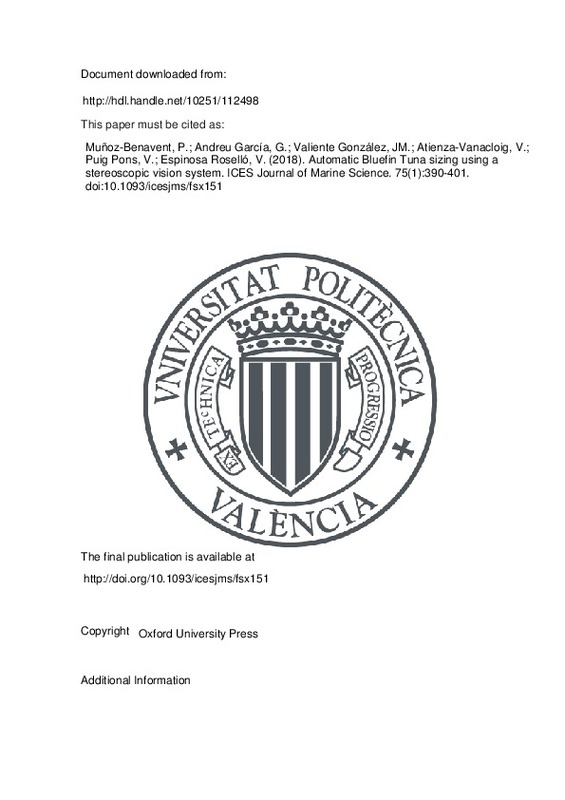JavaScript is disabled for your browser. Some features of this site may not work without it.
Buscar en RiuNet
Listar
Mi cuenta
Estadísticas
Ayuda RiuNet
Admin. UPV
Automatic Bluefin Tuna sizing using a stereoscopic vision system
Mostrar el registro completo del ítem
Muñoz-Benavent, P.; Andreu García, G.; Valiente González, JM.; Atienza-Vanacloig, V.; Puig Pons, V.; Espinosa Roselló, V. (2018). Automatic Bluefin Tuna sizing using a stereoscopic vision system. ICES Journal of Marine Science. 75(1):390-401. https://doi.org/10.1093/icesjms/fsx151
Por favor, use este identificador para citar o enlazar este ítem: http://hdl.handle.net/10251/112498
Ficheros en el ítem
Metadatos del ítem
| Título: | Automatic Bluefin Tuna sizing using a stereoscopic vision system | |||
| Autor: | ||||
| Entidad UPV: |
|
|||
| Fecha difusión: |
|
|||
| Resumen: |
[EN] This article presents a non-invasive fully automatic procedure for Bluefin Tuna sizing, based on a stereoscopic vision system and a deformable model of the fish ventral silhouette. An image processing procedure is ...[+]
|
|||
| Palabras clave: |
|
|||
| Derechos de uso: | Reserva de todos los derechos | |||
| Fuente: |
|
|||
| DOI: |
|
|||
| Editorial: |
|
|||
| Versión del editor: | http://doi.org/10.1093/icesjms/fsx151 | |||
| Código del Proyecto: |
|
|||
| Agradecimientos: |
|
|||
| Tipo: |
|







![[Cerrado]](/themes/UPV/images/candado.png)


